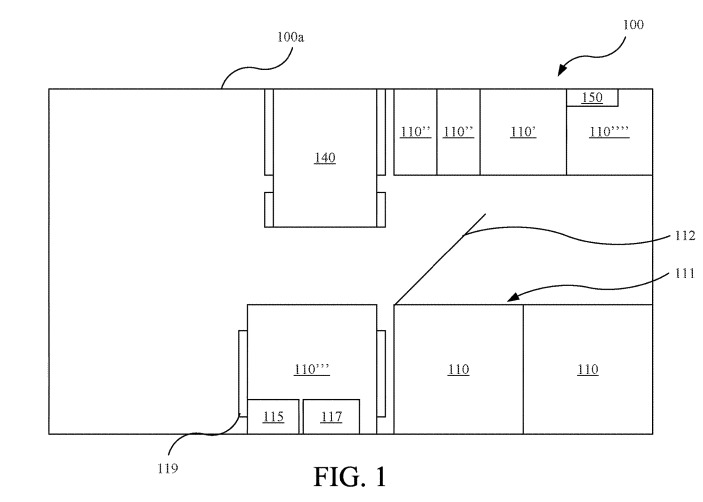Apple's potential future car could have force feedback systems added to the door hinges to prevent them from being opened too far, while the suggestion of lockable storage in a vehicle opens the door to automated and secured delivery trucks unlocked by iPhones.
Over the years, the company has produced a number of design ideas for vehicles it may employ in a future Apple car, as part of its automotive efforts under the banner of "Project Titan." Along with design concepts that fundamentally change key areas of a vehicle's makeup, Apple has also considered smaller changes that can improve the quality of life of passengers and drivers.
In the first of two patents granted to Apple by the US Patent and Trademark Office titled "Hinge with feedback," Apple proposes the creation of a hinge system that can provide force feedback, namely that it presses back against external forces attempting to move it.
Current hinges in vehicle doors are not typically built with motors and force feedback systems. Instead, most are made from a simple pivoting mechanism, which may be assisted by other elements to slow down movement or, in the case of gull-wing doors, help raise them up and out of the way.
Apple suggests the addition of force feedback, by using a motion control component and sensor system to determine the direction of intended motion for the door, and to set a level of force feedback to resist its motion. Depending on the system's settings, this could resemble a simulated spring that stops the user from moving the door beyond a certain point, such as to prevent it from making contact with a detected nearby object or wall.
The motion control system can include a stepper motor that applies torque to the hinge, or to include piezoelectric elements capable of varying the magnitude of feedback force. A display or indicator would also be visible on or nearby the door to signal it can be moved freely or would provide some level of feedback.
The patent also outlines how the system could apply different levels of feedback to motion depending on the situation. For example, it could apply small amounts of feedback in the case of wind blowing against the door, or greater amounts if it detects a greater push by the elements, like a sudden gust.
The angle of a vehicle in 3D space could also be taken into account, with feedback being applied to prevent a door from swinging open too fast if it is on a downward slope and assisted by gravity. The ability to detect touch by a user could also allow the system to switch between low and high feedback states, reducing its strength against the elements if it knows a user is moving the door instead of resisting against that extra force.
While this largely has applications for vehicles, Apple also suggests the hinge resistance could also be used for notebook hinges, such as for the MacBook lineup. This would feasibly prevent the display section from moving about during strong winds, minimizing the chance of damage.
The second patent, "Secure storage components" is more obviously for a car, with explicit mentions of "vehicle" within the abstract.
It is suggested a vehicle could have cavities and closures that can "selectively" secure the compartments. The secure closures could be set to open up when an authorization input is received, such as a code, digital key, or a user electronic device like a nearby iPhone.
While this could be used to add more security to a vehicle's storage, such as locking a glovebox or preventing access to vehicle components by unauthorized persons, there could be more to the patent than at first glance.
The addition of one claim reading "the vehicle is operable to navigate autonomously to a user location in response to a user request for access to the storage components" proposes the use of the system for a self-driving delivery truck, with users able to unlock sections to retrieve their packages. This could be envisioned as a mobile version of the Amazon delivery lockers, or a FedEx truck with no driver, notifying users on their arrival to collect their packages before moving on to a new location.
Apple files numerous patents and applications on a weekly basis, though while the company does outline areas of interest for its research via the publication of the ideas, it however doesn't guarantee they will appear in a future product or service.
 Malcolm Owen
Malcolm Owen



-m.jpg)






 Andrew O'Hara
Andrew O'Hara
 Wesley Hilliard
Wesley Hilliard


 Marko Zivkovic
Marko Zivkovic

 Chip Loder
Chip Loder
 Christine McKee
Christine McKee




-m.jpg)




5 Comments
The first one is pretty good. Not having to worry about banging other cars or posts when opening a car door would be a nice feature.
Hinges with feedback/force are already present on cars. The sensors to prevent banging into another car or object exist on Tesla Model X.